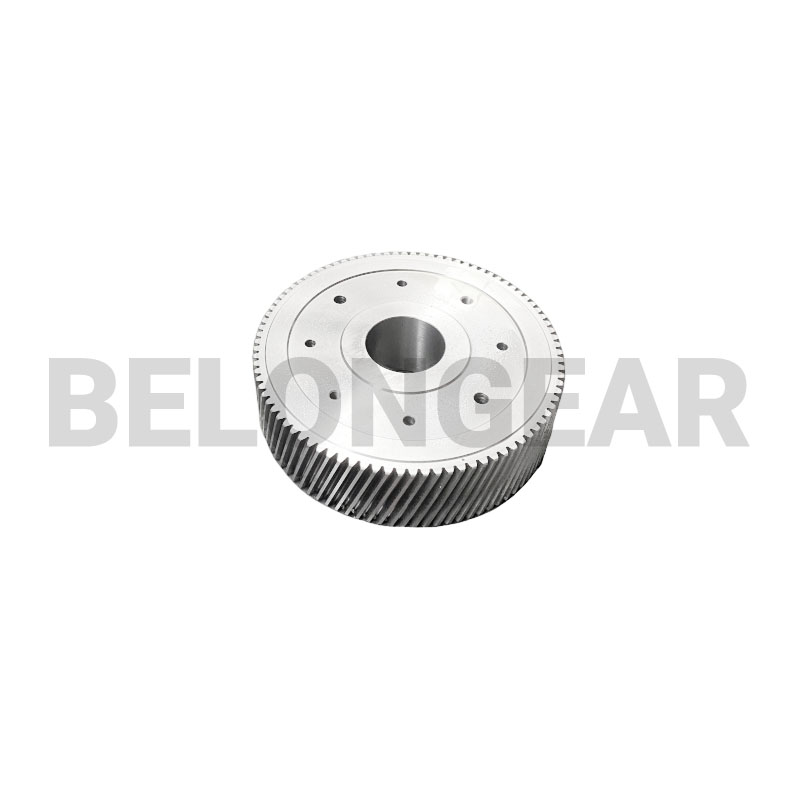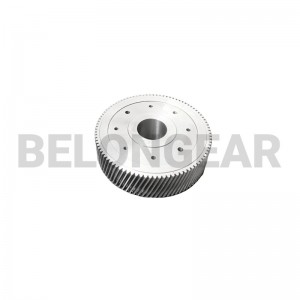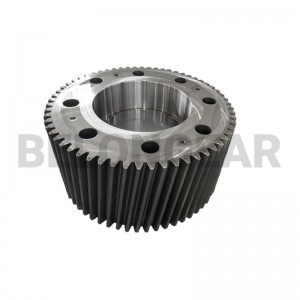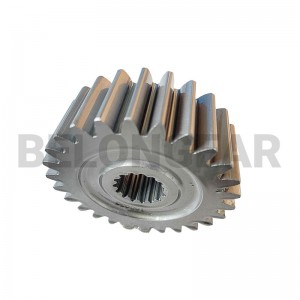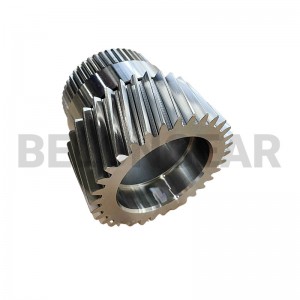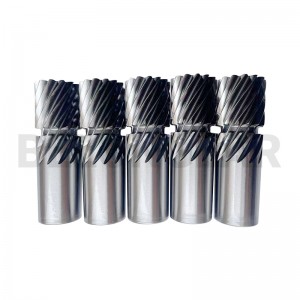Helical gear is a cylindrical gear with teeth cut at an angle to the gear axis, forming a helix shape. This angled design allows the teeth to engage gradually rather than suddenly, as in spur gears. As a result, the transmission of torque is smoother, and the noise and vibration levels are significantly reduced.
In helical gearboxes, two or more helical gears mesh together. The angled teeth ensure that multiple teeth are in contact at any given moment, distributing the load more evenly. This multi tooth contact allows for increased torque capacity and longer service life, especially under high-speed and high load conditions.
Advantages of Helical Gears in Gearboxes
Smooth and Quiet Operation The gradual engagement of helical gear teeth ensures less impact between mating gears, leading to reduced noise and smoother motion. This is particularly valuable in applications requiring quiet and continuous operation, such as elevators, automotive gear systems, and industrial machinery. Higher Load Capacity Because more teeth are in contact during meshing, the load is shared across a broader area. This increases the strength and durability of the gears, allowing them to handle heavier loads without premature wear or failure. Efficient Power Transmission Helical gears provide better efficiency than spur gears in transmitting power. This results in lower energy consumption and less heat generation, improving the overall efficiency of the gearbox. Versatility in Applications Helical gearboxes can be used for both parallel and non-parallel (crossed axis) shaft configurations, offering design flexibility for engineers in various sectors.
Helical gear Applications of Helical Gearboxes
Helical gearboxes equipped with precision-machined helical gears are found in a wide range of applications, including:
-
Automotive Transmissions – Providing smooth shifting and low noise operation.
-
Industrial Conveyors – Ensuring continuous and reliable power transfer.
-
Packaging and Printing Machines – Offering precision and consistency.
-
Mining and Construction Equipment – Withstanding heavy-duty operational stress.
-
Robotics and Automation Systems – Supporting accurate and controlled movements.
How to control the process quality and when to do the process inspection process ? This chart is clear to view .The important process for cylindrical gears .Which reports should be created during each process ?
Here is the whole production process for this helical gear
1) Raw material 8620H or 16MnCr5
1) Forging
2) Pre-heating normalizing
3) Rough turning
4) Finish turning
5) Gear hobbing
6) Heat treat carburizing 58-62HRC
7) Shot blasting
8) OD and Bore grinding
9) Helical gear grinding
10) Cleaning
11) Marking
12) Package and warehouse

We will provide full quality files before shipping for customer’s view and approval .
1)Bubble drawing
2)Dimension report
3)Material cert
4)Heat treat report
5)Accuracy report
6)Part pictures ,videos






We convers an area of 200000 square meters ,also equipped with advance production and inspection equipment to meet customer’s demand . We has introduced the largest size, the China first gear-specific Gleason FT16000 five-axis machining center since the cooperation between Gleason and Holler .
→ Any Modules
→ Any Numbers of Teeth
→ Highest accuracy DIN5
→ High efficiency ,high precision
Bringing the dream productivity, flexibility and economy for small batch.
forging
grinding
hard turning
heat treatment
hobbing
quenching & tempering
soft turning
testing
Inspection
We equipped with advanced inspection equipment like Brown & Sharpe three-coordinate measuring machine , Colin Begg P100/P65/P26 measurement center, German Marl cylindricity instrument , Japan roughness tester , Optical Profiler , projector , length measuring machine etc. to make sure the final inspection accurately and completely .





